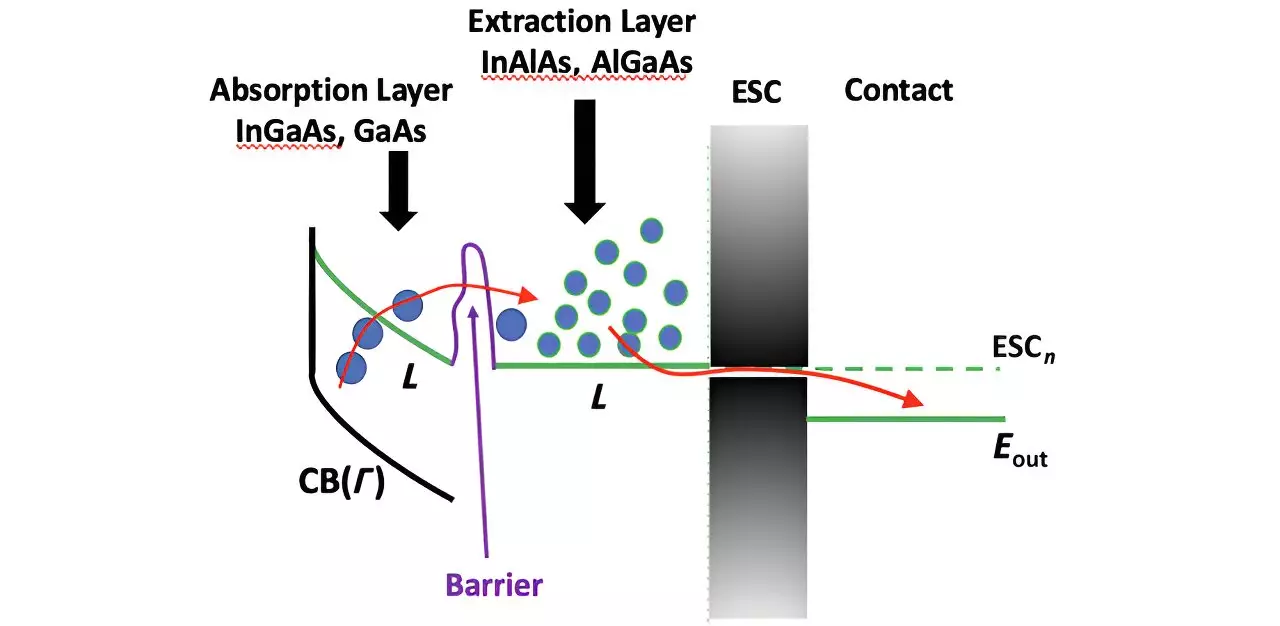As the world grapples with the realities of climate change and the urgent need for sustainable energy solutions, hot carrier solar cells present a tantalizing prospect for overcoming current limitations in solar technology. Introduced several decades ago, these innovative cells aim to bypass the theoretical efficiency limit established by the Shockley-Queisser model for single-junction solar cells. While hot carrier solar cells hold substantial promise for greater efficiency, the journey toward their practical application has been riddled with technical hurdles, particularly concerning the effective management and extraction of hot electrons.
Hot electrons are those that possess significantly higher energy than their surrounding environment, allowing them to convert more solar energy into electricity than traditional methods permit. However, the extraction of these high-energy electrons is not as straightforward as one might hope. The primary challenge lies in navigating the rapid transfer of these electrons across the interfaces of different materials. Researchers have long been interested in leveraging the satellite valleys within the conduction band to momentarily store these hot carriers before facilitating their collection.
Though promising, this approach has faced setbacks, particularly due to the emergence of parasitic barriers at the heterostructure interface. This barrier arises when the energy bands of the employed materials become misaligned, complicating the energy transfer process. With hot carrier extraction occurring in real space instead of momentum space, managing the subtle variations in band structure is crucial to improving overall efficiency.
A recent publication in the Journal of Photonics for Energy has illuminated the complex behaviors of hot electrons. Utilizing an empirical pseudopotential method, researchers dissected the intricate interaction of these hot carriers, focusing on their tunneling behavior across heterointerfaces. By aligning their calculations of the energy bands with experimental data, the study provides critical insights into optimizing hot carrier extraction.
The researchers found that the tunneling coefficient, which quantifies how readily electrons can navigate through barriers, is extremely high in specific material systems such as indium-aluminum-arsenide (InAlAs) and indium-gallium-arsenide (InGaAs). Despite the advantages of these materials, challenges such as interfacial roughness, even at an atomic level, significantly hinder the efficiency of electron transfer. Aligning energy bands accurately is therefore essential to address this issue and enhance overall device performance.
Interestingly, a notable contrast is observed within systems that incorporate aluminum gallium arsenide (AlGaAs) and gallium arsenide (GaAs). Researchers have discovered that manipulating the aluminum composition in the barriers leads to favorable alignments in energy bands, effectively mitigating the barriers created at the interfaces. Such conditions can yield a tunneling coefficient of 0.5 to 0.88, signifying a leap in the efficiency of electron transfer compared to previously studied systems.
This promising development not only highlights the potential for improved energy capture but emphasizes the importance of atomic-level precision in material growth. The strategies employed within these heterostructures contain pathways that easily facilitate real-space transfer, a factor that is typically deemed undesirable in traditional transistors but becomes a critical asset in valley photovoltaics.
The evolution of hot carrier solar cells represents a significant frontier in the quest for more efficient solar energy solutions. As researchers navigate the challenges presented by material interfaces and band alignment, the insights gleaned from recent studies illuminate pathways toward practical implementations. By refining methods for harnessing hot carriers and reducing hurdles relating to tunneling and interface issues, the potential exists to transcend the efficiency limits of current solar cell technologies.
Ultimately, the continued exploration of advanced material systems like AlGaAs/GaAs could catalyze the next generation of solar cells, potentially revolutionizing the solar energy landscape and contributing towards a sustainable energy future. Engaging with this technology may well hold the key to reshaping how we generate and utilize energy from the sun, moving us closer to a more sustainable and efficient world.


Leave a Reply